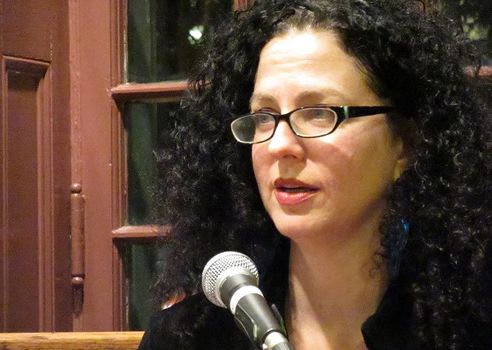Reading time: Less than 1 minute
I like to share interesting pieces of figurative language I encounter in my reading. I write today about some personification from New Yorker writer Emily Nussbaum…
I haven’t yet seen the much-lauded TV adaptation of Margaret Atwood’s 1985 novel, The Handmaid’s Tale. (I am notoriously late watching most television. My husband and I are currently working our way through a boxed set of the 1999-2007 show The Sopranos.)
But a review by Emily Nussbaum (pictured above), in the New Yorker — headlined, A Cunning Adaptation of “The Handmaid’s Tale” — has persuaded me to give the recent show a try.
I usually find Nussbaum’s writing funny and ironic and filled to the brim with colourful figurative language. This time, however, her tone is dark and sombre, in keeping with the theme of Atwood’s dystopian novel. In the book, Gilead (the US) is a white-supremacist culture in which women are suppressed and an environmental calamity has caused mass sterilization.
The plot sounds more violent than I typically like — can’t say I’ll look forward to the scene in which actor Alexis Bledel suffers genital mutilation. But I’ll close my eyes for the parts I won’t like because I know the story to be both thoughtful and provocative.
These same terms might apply to Nussbaum’s review. Here’s a sample:
It [the 1980s] was a peculiar era in which to be a teen-age girl, equally prudish and decadent: the era of Trump Tower and cocaine, AIDS and “Just Say No.”
I like the way she captures the zeitgeist of the decade by personifying it.
[Photo credit: kellywritershouse. Licensed under the Creative Commons Attribution 2.0 Generic license.]


